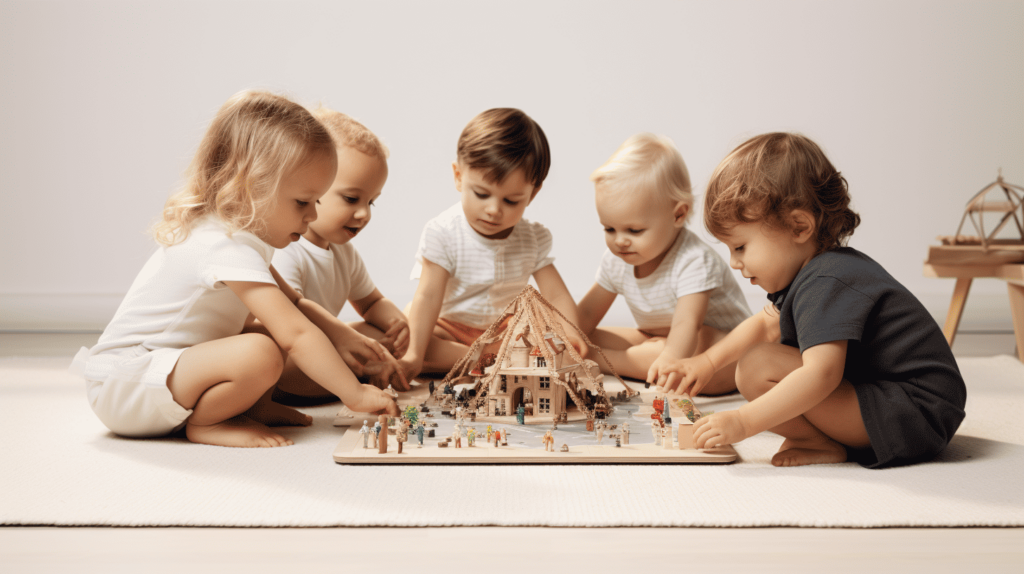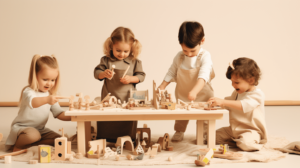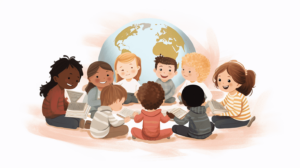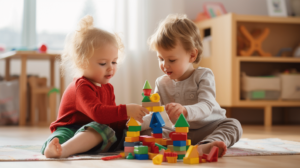
Sibling Relationships – Tips for Encouraging Bonding
Discover effective tips for nurturing sibling relationships and fostering a strong bond between siblings. Create lasting connections and promote harmony.

Pour yourself a cup of coffee 



This guide could be a game-changer in your home, painting your daily grind with a brush 

It’s a special bond like no other. You share the same dirty little secrets, the same tattoos from journeys together, the same prank sagas that still make your sides split with laughter. Yes, you got it right! We’re talking about the wonderful world of sibling relationships. They make our life colorful, adding a charming blend of love, fun, and no-girlfriend/boyfriend talk.
In the glorious adventure of our lives, siblings unquestionably play a glowing part. This article provides interesting insights into this relationship, talked about less frequently but experienced ubiquitously. Let’s dive into the enchanting world of sibling relationships!
Keeping score with numbers is an engaging way to put things into perspective. We’re lucky that we have some interesting numbers when it comes to sibling relationships. You’d be surprised to know that a staggering eight in ten children in the U.S. grow up with a sibling.
To give you context, this figure is higher than the number of kids living with their fathers. That’s quite the eye-opener, isn’t it? It’s a gentle reminder of how thick, undergoing, and widespread sibling relationships are in the familial tapestry of American society.
Moving on to another fascinating aspect of sibling relationships is their longevity. Often overlooked yet irreplaceably significant, sibling ties are typically the longest relationships of our lives. 
However, one thread that binds us for the longest is the kinship of siblings. Their presence, be it a comforting hug, a caring text, or a joyous holiday meet-up, seeps into many of our prime memories. Hence, the tag of ‘longest relationship’ becomes another feather in the hat of sibling love and closeness.
While the journey with siblings is often painted with a joyous palette, there’s another heartening fact you should know. Sibling relationships aren’t just about pillow fights, sharing desserts (or perhaps not!), or unfathomable laughter. The quality of these relationships can also have a profound impact on our psychological well-being.
Here, we’re looking beyond the obvious fun-filled camaraderie; we’re touching the realm of mental health. When siblings share strong bonds and relationships, it can create a buoyant environment that fosters improved mental well-being. These relationships typically provide the kind of consistent emotional support that’s highly beneficial for our mental strength and resilience.
Thus, sibling relationships, rich in love, longevity, and impact on mental health, hold an unmistakably special place in our lives. From being our first playmates to turning our confidants later in life, siblings help shape our lives in countless beautiful ways. This treasured bond deserves all the love and emphasis it gets, and maybe even a little more.
When it comes to the vast landscape of family relationships, the dynamic between siblings is perhaps one of the most complex yet fascinating. This unique bond is often marked by profound support, inevitable conflict, and of course, a good measure of sibling rivalry. Whether it’s two sisters fighting over a doll or two brothers competing for their parents’ attention, these competitive interactions can mold their personalities and social behavior in significant ways.
Sibling rivalry is an inseparable part of growing up together. In particular, it is observed more often among children who are of the same gender and close in age. However, often misunderstood as purely negative, this rivalry isn’t always a bad thing.
While rivalries may steal the spotlight in the narrative of sibling dynamics, it’s crucial not to overlook the considerable influence this relationship has on social development.
With your siblings being your first “peers,” it’s no surprise they’d have a major impact on your social development. Sibling relationships are indeed a significant source of both support and conflict in this area.
Though it’s almost impossible to avoid moments of conflict and rivalry in the sibling ride, remember, these encounters aren’t just about who gets the bigger slice of pie. They’re forming the building blocks of your personality, honing your social skills, and painting the canvas of your emotional intelligence. In fact, it might not be drastic to say that your siblings can be the best teachers you didn’t know you signed up for!
So, next time the sibling rivalry kicks in, don’t rush to put out the fire. Sometimes, it’s out of these sparks that the most enlightening lessons are born.
Playing isn’t just fun and games; it’s a fundamental part of childhood. Besides developing physical and cognitive skills, play also fosters social interactions, particularly between siblings. Delving into the world of sibling bonding through play, let’s explore the wonders it brings and the bonds it builds, which are often preserved for life.
When siblings come together for a playful session, more than just fun is being shared. Interestingly, the very act of playing together triggers the release of oxytocin. Lovingly called the “feel-good hormone,” oxytocin plays a significant role in the development and strengthening of social bonds. It creates a sense of security and trust, crucial cornerstones for any relationship. More importantly, in the context of sibling relationships, it sets the stage for long-lasting bonds, providing a strong foundation for a lifetime of camaraderie.
Sibling bonds formed through play have a profound impact that goes beyond childhood; they often last a lifetime. 
The beauty of play is in its versatility. Children benefit from both unstructured playtime with their siblings and independent play.
When left to their creativity during periods of unstructured play, children thrive. They negotiate roles, devise their games, and execute them, developing patience, creativity, cooperation, and real-world problem-solving skills.
On the other hand, structured play offers its unique benefits. Siblings learning a new sport or a board game together encourages teamwork, discipline, and respect for rules. It provides an excellent opportunity for the older sibling to step into a teaching role, fostering a sense of responsibility and leadership.
In the grand scheme of things, there isn’t a “one method fits all”. The ideal recipe varies from one sibling set to another and even from one situation to another. But as long as the essence of play is preserved, be it unstructured or structured, the bonds crafted between siblings will remain unshakeable and remarkable.
So, the next time you see your kids immersed in a make-believe world or strategizing for a board game, don’t just see it as playtime. Acknowledge it as a magical process of building lifelong bonds and skills.
In the digital age we live in, screens have become perpetual companions for children. At an early age, they’re already swiping, clicking, and watching. But what does this mean for their development? How does interaction with screens at a tender age conflict with the age-old, undeniably beneficial outdoor play?
Despite the allure of animated characters dancing around and colorful objects whizzing across the screen, a sustained engagement with screens could be a double-edged sword for a child’s development. Ironically, despite such tools aim to educate, studies have discovered that screen time at age 1 is linked with higher developmental delays in toddlerhood.
How so, you ask? When toddlers interact with screens, they are being passive. This blasé engagement deprives children of the very interactions and cues that foster vital cognitive and socio-emotional skills. Interactive play, on the other hand, invites toddlers to touch, feel, and imagine, building not only their cognitive capacities but also their dexterity. Activities as simple as stacking blocks, scribbling with crayons, or role-playing with stuffed toys – all fall under the umbrella of active, engaged play. It’s a stark contrast, isn’t it?
Now, let’s step out of the digital realm and into the fresh air. Playtime has always held pride of place in a child’s life, and with good reason. Venturing outdoors and interacting with the natural environment can do wonders for a child’s development.
Just imagine a child captivated by the soft, crawling bug on a leaf, or the thrill of racing down a slope with hands outstretched as if they’re taking flight. These riveting adventures cultivate not only physical prowess but also important skills such as observation, creativity, and self-confidence.
Moreover, outdoor play facilitates social interactions as children participate in games or share toys. Without realizing it, they learn about cooperation, negotiation, boundaries, and conflict resolution. For parents, outdoor play is nothing short of a developmental gold mine!
When it all comes down to it, every child’s growth is a delicate balance. While technology has its merits, it is the classic, hands-on play, particularly outdoors, proves to be the true catalyst for development. So, go ahead; turn off that screen and head outside to explore the magic the world holds. The benefits are just too good to pass up!
Cultivating a close bond between siblings from early childhood is truly a priceless goal. As parents, we want to foster a loving and nurturing environment where our children can grow into lifelong friends and confidantes. One of the best ways to encourage this valuable relationship is through shared activities. Engaging toddler and sibling activities can fortify this bond, creating long-lasting relationships.
Fostering a strong bond between siblings in early childhood benefits them in numerous ways. It helps:


Nothing captivates a child’s imagination quite like a pot of play-dough. With an array of vibrant colors and textures to choose from, it becomes a sensory delight for toddlers. Older siblings can join in the fun too, guiding their younger sibling in molding creative designs. This shared activity nurtures a sense of teamwork and promotes creativity.


Choosing a beautifully illustrated children’s book and dedicating time to read it to both your toddler and their older sibling can be a heart-warming bonding moment. As you turn the pages, older siblings can bring the story to life for their toddler sibling by using animated voices and expressions.


Exploring the outdoors is both refreshing and exciting. A simple nature walk or a fun-filled day at the park can provide abundant opportunities for your children to bond. They can collect interesting leaves, chase butterflies, or build a sandcastle together. This team effort surely brings them closer.


Music naturally brings people together. Having a musical jam session with easy-to-play instruments like a tambourine or a xylophone and bopping to nursery rhymes can be a surefire hit. In the rhythm of the music, not only can they engage in melodic fun, but they also practice their coordination and improvisation skills.
Remember, bonds between siblings take time and patience to cultivate. The shared experiences they gain from these activities create a strong foundation for this lifelong journey of siblinghood. Make sure to encourage respect, acceptance, and open communication. Above all, remember that the goal is to have fun together!
As we wrap up our explorative journey into the world of sibling dynamics, we can conclude that interactive playtime not only enhances bonding between siblings but also promotes their overall well-being and social development. Simple but engaging activities offer a chance to cultivate everlasting bonds, rough-housing, shared laughter, and a deeply rooted sense of kinship.
Bear in mind, each toddler and their siblings are distinctly unique, thus their interactions might vary. However, the resounding truth is: playtime is crucial, be it structured or unstructured, indoor or outdoor! These experiences engrain essential life values, fostering an environment of support, understanding and mutual respect.
At Lovelycheeks, we strive to empower parents, ensuring you’re well informed and prepared as you guide your little ones on their life’s journey. Our tips and advice are designed to help you avoid common pitfalls, enhancing your parenting experience, as we believe in laying a strong foundation for your children’s future.
So why not kickstart this enriching journey? Head over to Lovelycheeks for access to a treasury of beneficial resources, because as they say, “the hand that rocks the cradle rules the world.”
Keep the love flowing, nurture the sibling bond, and remember – every moment is an opportunity for growth, learning, and creating lifelong memories. Play on!
There are various activities that toddlers and siblings can do together to enhance bonding, such as: playing board games, going for nature walks, having a picnic, doing arts and crafts, and reading books together.
Interactive playtime activities can benefit the bond between toddlers and siblings by promoting communication, cooperation, and teamwork. It also helps in developing social and emotional skills, creates lasting memories, and fosters a sense of togetherness.
Yes, there are activities that can be tailored for different age groups. For example, older siblings can engage in role-playing games with the younger ones, help them learn new skills, or participate in age-appropriate sports activities together.
Parental involvement during interactive playtime activities is crucial for creating a positive and supportive environment. Parents can guide the activities, encourage bonding, mediate conflicts, and provide a sense of security for both toddlers and siblings.
Absolutely! Bonding activities can easily be adapted for larger families. Some examples include organizing team-based games, dividing into groups for different activities, or rotating activities to ensure everyone gets a chance to participate and bond with each other.
Be the first to See our Posts and latest Guides, and Special Offers like Lovelycheeks on Facebook or follow us on Pinterest!

Discover effective tips for nurturing sibling relationships and fostering a strong bond between siblings. Create lasting connections and promote harmony.

Discover creative and interactive activities for toddlers and siblings to enjoy together. Keep the little ones entertained with fun and engaging ideas.

Discover fun and interactive activities for toddlers and siblings during storytime. Engage their imagination and create lasting memories with these ideas.

Discover fun and engaging activities to help enhance your toddler’s language skills and foster communication between siblings. Start teaching language skills early.